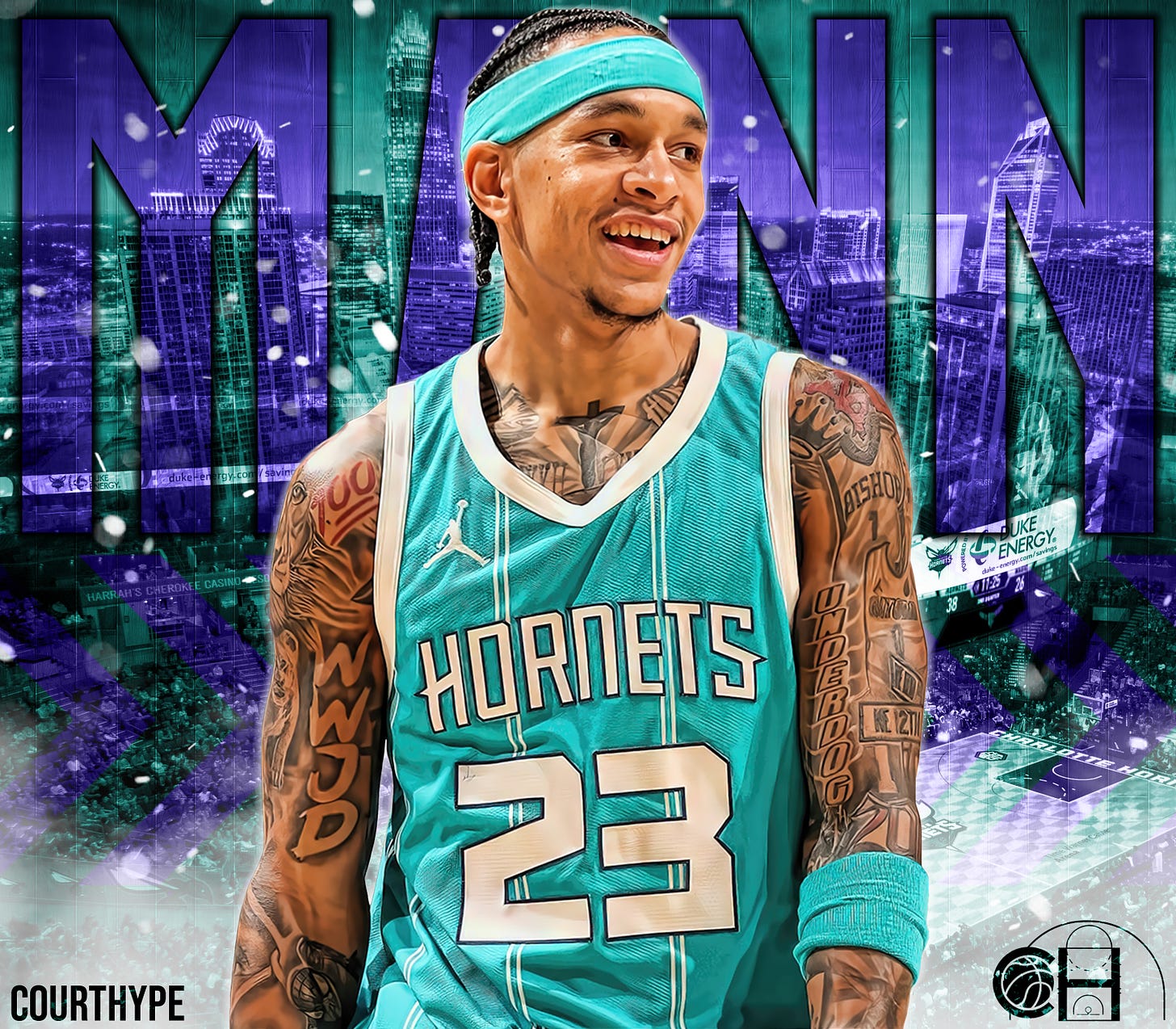A New Frontier for Tre Mann
Tre Mann has stumbled upon the perfect alchemy of role definition and organizational need in Charlotte, enabling his game to do the talking.
Tre Mann's hot start is a testament to how transformative a change of scenery in a player's formative years can be, and why using cap space on lucrative deals for high-level starters can pan out once a contract becomes expiring money (key word being "can" rather than "will").
Charles Lee has granted Tre a creative license (more colloquially known as a green light) that he was never afforded while buried in the depth chart in Oklahoma City. Optically, it was easy to dismiss his viability as a bankable contributor in the backcourt. To many he came off as another run-of-the-mill, volume scoring combo-guard on the backend of OKC's roster who showed out in the G-League and hunted his shot in non-competitive regular season games. Evidently, those notions were entirely circumstantial.
Mann has stumbled upon the perfect alchemy of role definition and organizational need. He passed his Point Guard trial run during the latter half of last season with flying colors, and has carried that momentum into 2024-25 while sharing the floor with LaMelo in healthy doses. The Hornets have a fully-actualized rotation, sans the perpetually afflicted Mark Williams, and Mann has been pivotal in shoring up their offense (currently ranked 19th through nine games). He has singe-handedly buoyed bench units in the non-LaMelo minutes and seamlessly toggled between scoring and distributing.
Scoring Punch
The impetus for Mann coming into his own has been his conversion rate from every segment of the court, at least as it currently stands. A sample of 120 FGAs is hardly exhaustive, but 56.5% from floater range, 45.0% from mid-range and 47.8% on catch and shoot triples is no small feat. For a diminutive guard who can shed his defender off the bounce, making the defense pay on his in-between looks will work wonders when run off the 3PT line.
Tre's back-to-back showings against the Celtics were his most endearing. Length at every turn, every matchup in single coverage towering over him, smothered from perimeter to paint and occasionally greeted by the help. Even still, he worked the angles and found ways to manufacture (and convert) looks in the upper paint despite the high degree of difficulty.
Floater Range
Mid-Range Jumpers
Catch & Shoot Threes
A Steady Distributor
On the playmaking front Tre is keeping it simple, and to great effect. He has been rock steady with a live dribble, primarily getting to the nail when attacking off the dribble. He habitually recognizes when multiple sets of eyes and bodies are coalescing around him, and deploys patience when spraying it back out to the perimeter. He rarely attempts to thread impossible needles, but rather executes simple, effective reads that put the defense on tilt. Drawing the help and moving it on goes a long way with modern spacing.
The Defensive Side of the Ball
I typically pride myself on providing two-way analysis, but the reality is there is not much to report on defensively (both individually or collectively) in this instance. Defense is forbidden fruit in Charlotte, at least while Nick Richards and Taj Gibson operate as their frontcourt backstops. The Hornets boasted the 29th ranked defense prior to their win against Indiana, but if their theoretical defensive anchor (Mark Williams) ever manages to grace the court then improvement should be inevitable. Tre has done his best shifting his feet, tracking his man away from the ball, and fighting like all hell on switches in the mid-post. Nevertheless, Charlotte's strategic identity on that end of the floor will not materialize until their rotation is fully-formed and Charles Lee can instill some homogeneity between his perimeter and interior personnel.



